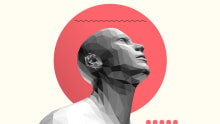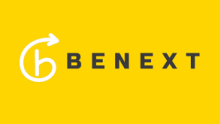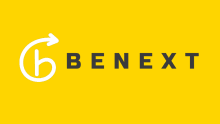Think outside the (technology) box to deliver on HR transformation priorities: Gartner’s John Kostoulas

In our latest Power Hour session, the BeNext Digital Transformation & Leading Change cohort came together with John Kostoulas, VP Analyst at Gartner, who talked learners through some key aspects of Gartner’s research as well as the 2022 HCM Technology Imperatives for HR Leaders. A power-packed hour of fresh insights and dialogue, John’s research set attendees up with an encouraging baseline from which to make their 2022 digital transformation and technology plans.
Our learners had plenty of questions for John, to which he shared some very insightful answers. Here are the excerpts.
What should be the top priority when designing the right digital experience for employees?
When it comes to thinking about digital experience - and the connection to the broader employee experience - at the end of the day, digital experience is not something that is separate. When people jump out of bed every morning to go to work, they have a single feeling. It's not like “my systems work, but my boss is terrible.” [The feeling] is ”I don't want to jump out of bed”, or “I would happily jump out of bed to go to work.” The first thing is to think and listen to what employees are saying as to their overall feeling, because employee experience means a single feeling. More and more, you would expect that digital applications are playing a more critical role, meaning you've got more digital touch points, you spend more time collaborating with people over Zoom and Teams and WebEx. Things have changed a lot with regards to the influence of digital applications into the overall feeling, so think about this connection, but do not limit your perspective around digital experience only.
When it comes to action, you have to prioritise. One thing that we have seen in our own research around employee experience is that the more organisations are progressing related investments, the more granular the target audience of these investments becomes. We have the law of diminishing returns applying here: you're putting in the same money but the incremental increase in employee experience goes down. What is very important to do - alongside putting money in technologies - is to shape employee experience: meaning to listen, to communicate expectations, to think about employees and how they can determine their own experience instead of expecting managers to do that on their behalf. In our research, employee experience investments can explain only a third of employees’ satisfaction, as expressed by discretionary effort, intent to stay and high performance. Shaping employee experience can make a two-fold contribution, and explain the other two thirds. To summarise: think of employee experience as a single feeling. Think about the touch points, and then prioritise. Don't expect that technology can solve it all the way through: you have to shape employee experience.
Can you share some examples of a recent digital transformation that organisations are going through or planning to take up to ensure business growth?
Skilling is the number one priority for HR leaders, as expressed in our annual survey for the last four years. What does it mean from a transformation point of view? We get this topic very often, particularly from L&D leaders used to dealing with learning programs and learning demands and how to deliver the programs that people want and to make sure all these programs are delivered successfully. Suddenly, learning delivery is not, in itself, sufficient to deliver skills development. Skills development is connected not just to learning but to other aspects like projects (learning by doing), mentoring, and coaching. Skills development eventually has to be connected not just with the skills of the individual and what the organisation wants to have, but also with the skills that are needed out there and how the business evolves. And skills are evolving faster and faster. What transformation is connecting these worlds? To make sure that learning is not an island. That learning delivery provides more options to the organisation and eventually ties skills development to performance and recognises that skills development is not just related to learning.
The other transformation example is how organisations can try to open up and break the silos with regards to talent. This is what we call the “internal talent marketplace.” Very often the problem for people to move internally is that they don't have visibility of what's going on, what opportunities are there - not just for moving jobs, but also to do projects, to find mentors and so on. At the same time, there is a culture of keeping people inside their teams. This hinders the ability of the organisation to make the best use of their talents. Often people want to use the talent and skills they have, but they don't know or they cannot because people are not moving or they are afraid to move. This is another transformational activity we see a lot: to break the silos, to make sure people get visibility of your growth opportunities, to get visibility of how they can contribute, and what is eventually the impact on skills.
A third transformation aspect is around employee experience. In large organisations, if you count the systems you use just for HR, you can count them to hundreds; their total number is literally a triple-digit one. It's a lot and it's complicated, and it's fragmented and it's disconnected. Again, think about the singular feeling of people jumping out of bed or not jumping out of bed translated to wanting to complete a specific workflow. For example, I want to update my status because a new child was born, but I have to go into three systems to do that. How can this look like one workflow and not me logging into three systems? Again, there is a lot of all this need for orchestration (as replacement is typically not an option); if we keep the same musicians in the orchestra, how do we make sure they're synchronised to produce music and not noise?
When there's pressure to achieve a lot in a short timeframe, what tips do you have for prioritising and declining? What should be for short, mid and long term?
One very good rule of thumb is to understand what is critical for the business and try to apply down to each potential option. The test would be "if I do this, what is the business impact?” Very often that's why organisations have very fragmented and disconnected system landscapes: because these purchases have been made in order to fulfill functional requirements. “I want to do task number four, therefore I buy this system.” This mindset ends up with silos. My message here: think the other way around. Think like a CHRO. Ask questions: What business impact does it make? How does it add to the way the HR function would fulfill business priorities?
One interesting blind spot all these years with regards to technologies is that organisations didn't do much to understand how their frontline feels and behaves. Now, after COVID, they realise that this is an important investment, because the frontline is typically at least one third of the business and it's the part of the workforce that speaks to the customer. Again, think: who is affected? How many people are affected? That ties to business impact, but it also ties to aspects of the workforce, employee experience and what you would expect from the teams and the individuals to do better.
Digital transitions always come with limitations: things may look good on paper, design, etc. But there are elements of surprise post-implementation. What's the best way to manage uncertainty, maintaining the transition success? What should be consistently maintained throughout the transition?
In January 2020, businesses had all their business objectives ready. They probably had cascaded these objectives and if it was a year like any other they would do annual performance reviews based on those objectives. Now organisations have gone through the experience of having to deal with uncertainty, which means that they don't over-design on paper.. You have to be agile. In agile mode, you start with something. You test it and iterate. You have to involve the different personas in design. One mistake that I've seen throughout the years in terms of design is not to involve the actual users. So, take somebody who is an employee - not in HR - take somebody who is a manager and ask them to participate in the design because it is something that they will use; not something that you will just change and manage.
Things will look different when you scale them, things will look different across different countries. It's very important to leave open places in your design so that it can be changed. Leave room so other points of view can be involved quickly. So, think agile, start small, listen to the end users on how and when they participate.
Offering an insightful and thorough dive into the current and future landscape of HCM technologies, John’s Power Hour presentation left BeNext learners with much to consider as they enter a new year, one that will no doubt bring even more change, innovation and transformation to their business.





